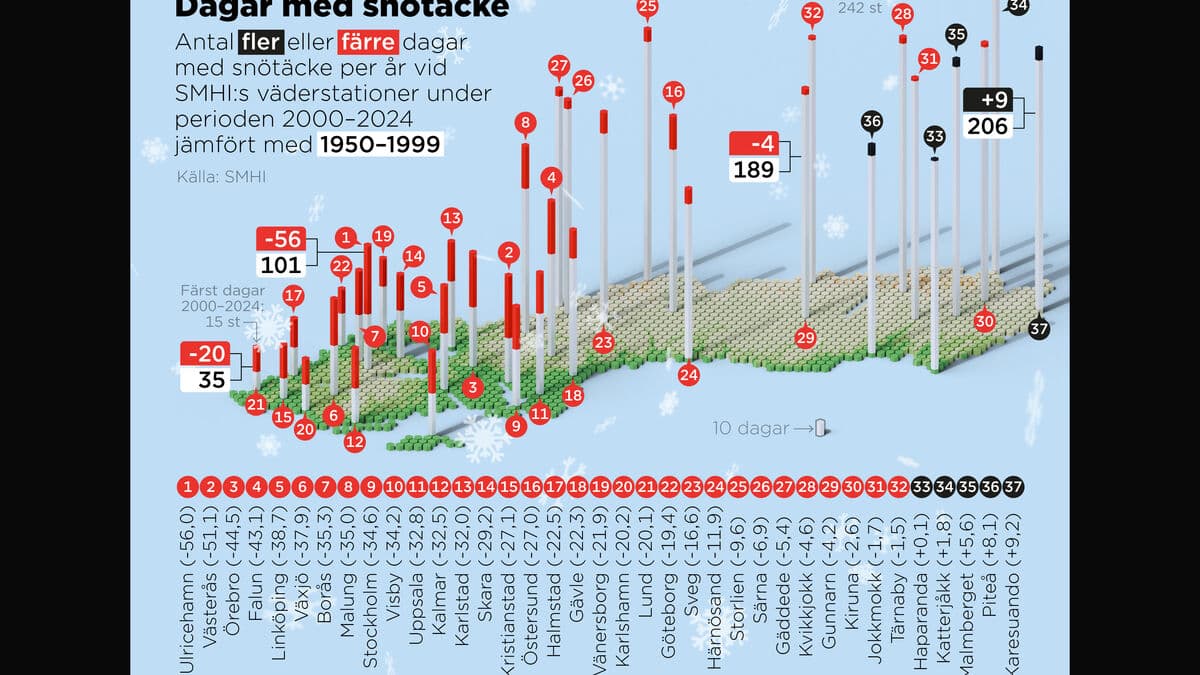A new grading scale and limited opportunities for schools to set lenient grades are two central parts of the report submitted by investigator Magnus Henrekson to Education Minister Lotta Edholm (L) on Wednesday.
The current grading system has been criticized for leading to inflation and unfairness, as some schools set higher grades than they should. The national tests have not functioned as a national standard as intended.
Henrekson notes that the current grading is not equivalent and cannot be compared between schools.
Sweden stands out, he says.
Dramatic Consequences
The scale has also been questioned because the grade F has such dramatic consequences. With too many F's, the path to a national program at upper secondary school is closed. Last year, nearly 20,000 ninth-graders (16 percent) did not become eligible and were referred to an introductory program.
The grading inquiry now proposes that six grade levels become ten, and a higher proportion of students become eligible.
We propose a new grading scale without a sharp pass/fail boundary and grades set on a scale of 1 to 10. Many may think it's a lot, but in France, they have 1-20, so it's not entirely extreme, says Magnus Henrekson.
Grades 1-3 will represent "less than acceptable knowledge," but will not be zero-value like F. Students who receive an average of 4 will become eligible for upper secondary school.
Test Results Count
To prevent grading injustices, the inquiry proposes that national final exams be introduced in year 9 and upper secondary school. These will be centrally corrected, and the test results will account for 30 percent of the student's final grade. Teacher-set grades will account for 70 percent.
The test results at school level will also correlate with the school's average grade value.
It will no longer be possible for schools to attract students by saying that you'll get good grades here, even if you don't have to work that hard, says Henrekson.
When asked how students will be motivated to take the final exams, and not skip them out of fear of doing poorly, Henrekson says that there should be an incentive – it should be worth taking the test.
Today, many students testify that the national tests create stress. It will get better, according to Henrekson.
The stress is much worse today – you don't know when and how you'll be assessed. Here, it's clear what applies, says Magnus Henrekson.
Ten grade levels without a sharp pass/fail boundary:
1–3 less than acceptable knowledge
4–5 acceptable knowledge
6–7 good knowledge
8–9 very good knowledge
10 excellent knowledge
An average of 4 gives eligibility for upper secondary school.
National final exams in year 9 (in five subjects) and upper secondary school (five to eight subjects). Centrally corrected. The result accounts for 30 percent of the student's final grade/badge value, teacher-set grades account for 70 percent.
Final exams can be retaken, and a better result will replace the previous result.
Source: SOU 2025:18, A Equivalent Grading System





